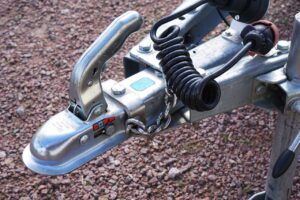In the competitive world of motorcycle manufacturing, cost reduction is a crucial objective for maintaining profitability while delivering high-quality products to consumers. One of the less obvious but highly effective strategies for cost saving lies in optimizing the design of motorcycle wire harnesses. A well-thought-out wire harness design can lead to significant reductions in production costs, material waste, and labor, all while enhancing the overall performance and reliability of the motorcycle. Here’s how you can unlock these benefits:
Simplify the Design
Streamlining Complexity: One of the first steps in optimizing wire harness design for cost reduction is to simplify the layout and components. Review the design for any unnecessary complexity that doesn’t contribute to the functionality or safety of the motorcycle. Eliminating redundant wires, connectors, and circuits can reduce material costs and make the assembly process faster and less labor-intensive.
Standardize Components
Uniformity Across Models: Where possible, standardize the components used in wire harnesses across different motorcycle models. This approach allows for bulk purchasing of materials, which can significantly reduce costs. Additionally, using common parts across models simplifies inventory management and can speed up the assembly process, as workers become more familiar with the components.
Use Cost-Effective Materials
Material Selection: While it’s crucial not to compromise the quality and durability of the wire harness, exploring alternative materials that offer similar performance at a lower cost can lead to substantial savings. Conduct thorough testing to ensure that any new materials meet the required standards for safety and longevity. Additionally, consider the use of materials that are easier to handle and assemble, which can reduce labor costs.
Integrate Functions
Consolidation of Features: Look for opportunities to integrate multiple functions into single components within the wire harness. This integration can reduce the overall number of parts needed, thereby lowering material and assembly costs. For example, integrating sensors or switches directly into connectors can streamline the design and reduce the footprint of the wire harness.
Automate the Design Process
Leveraging Technology: Utilize software tools for wire harness design that can automatically generate optimized layouts based on input parameters. These tools can help identify the most efficient routing for wires and the optimal placement of components, reducing material usage and minimizing the length of wires required. Automation in design not only speeds up the development process but also ensures consistency and minimizes errors.
Focus on Manufacturing and Assembly Efficiency
Design for Manufacturing: Consider the manufacturing and assembly process in the design phase. A design that is easy to manufacture and assemble can significantly reduce production costs. This includes designing for automated assembly processes where possible and minimizing manual labor, which is often one of the most significant costs in wire harness production.
Collaborate with Suppliers
Partnership for Innovation: Engage with wire harness suppliers early in the design process. Suppliers can offer valuable insights into cost-saving opportunities based on their experience and expertise. They may suggest alternative materials, components, or design modifications that can reduce costs without impacting quality.
Conclusion
Optimizing the design of motorcycle wire harnesses is a strategic approach to reducing production costs without compromising on quality or performance. By simplifying the design, standardizing components, using cost-effective materials, integrating functions, leveraging design automation, focusing on manufacturing efficiency, and collaborating with suppliers, manufacturers can achieve significant cost savings. These optimizations not only benefit the bottom line but also contribute to the sustainability and competitiveness of motorcycle products in the market.



